Hiding Among Tall Grasses
Late Spring / July 2021 / Mark VanDyke

The days are long. The longest they’ll be all year. It’s late June and I’m sitting, tired but content, surrounded by tall grasses in an open meadow just off the Appalachian Trail in the Roan Highlands. I’m waiting for the sun to drop into the western sky. The lower intensity of light will bring dimension to the photographs I hope to make. Meanwhile, the luxury of time is allowing me to slow down. To observe my surroundings. To take note. To pay attention.
American poet, Mary Oliver writes, “To pay attention, that is our endless and proper work.” Author Tina Welling in her book “Writing Wild,” moves attention towards practice through a three-step process of naming, describing, and interacting; what she refers to as a spirit walk. Welling further writes, “As writers, we need to live more fully than others; most certainly, writers need to live more fully than their readers” (p.14).
And so I sit among the late spring grasses on the high-elevation grassy balds of Roan Mountain drifting into and out of my own thoughts. Must I too see the world more fully than my viewers? What exactly does that mean? And, even if I learn to experience the natural world more deeply, how will I translate this experience through the photograph?
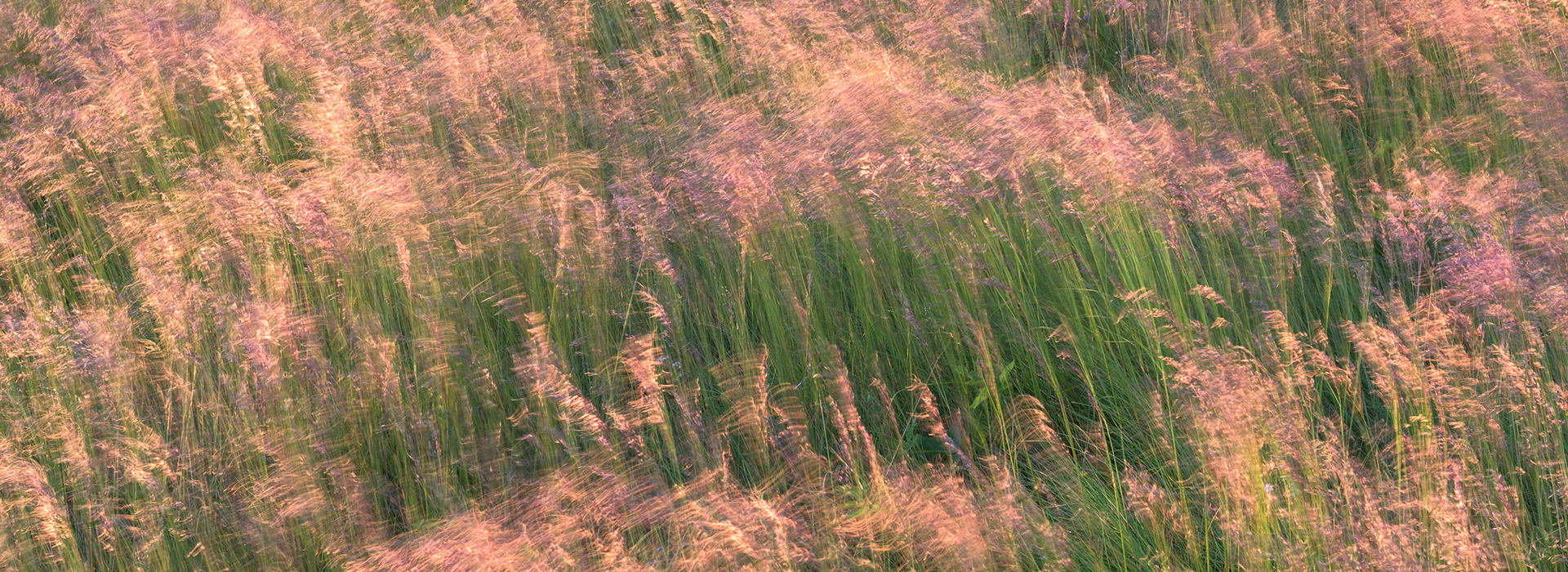
Temperate grassy balds like the one I’m sitting in are uncommon. Anomolies. Open meadows well below treeline, grassy balds can be found in four Southern Appalachian states: North Carolina, Tennessee, Virginia, and Georgia. Their origin and continued existence remains a mystery. Jennifer A. Bauer discusses the various origination theories in her book, “Roan Mountain: History of an Appalachian Treasure.” Some believe the balds to be of natural origin; others, that they are the result of human intervention. The Cherokee, too, have their own creation stories for this natural landscape. Figuring out the correct origin remains important as it dictates the conservation strategy into the future.
The highland meadow on Roan Mountain where I’m sitting today is part of the longest continuous stretch of grassy bald in the world at roughly seven miles and nearly 1000 acres. Grassy bald is exceedingly rare. NatureServe ranks grassy bald habitat as G1: Critically Imperiled. G1 habitats are at high risk of extinction. Accessible only by foot via the Appalachian Trail, the grassy balds of Roan are found north of Carver’s Gap. The balds run the open ridgeline of three peaks: Round Bald, Jane Bald, and Grassy Ridge Bald. While not the highest peaks in Southern Appalachia, each bald reaches north of fifty-five hundred feet in elevation. The views are nothing short of remarkable and draw visitors, like me, from near and far. I’m not here for the grassy balds, though. Not directly. My attention is turned, instead, to a beautiful red wildflower that grows hidden among the tall grasses of the balds: The Gray’s Lily.
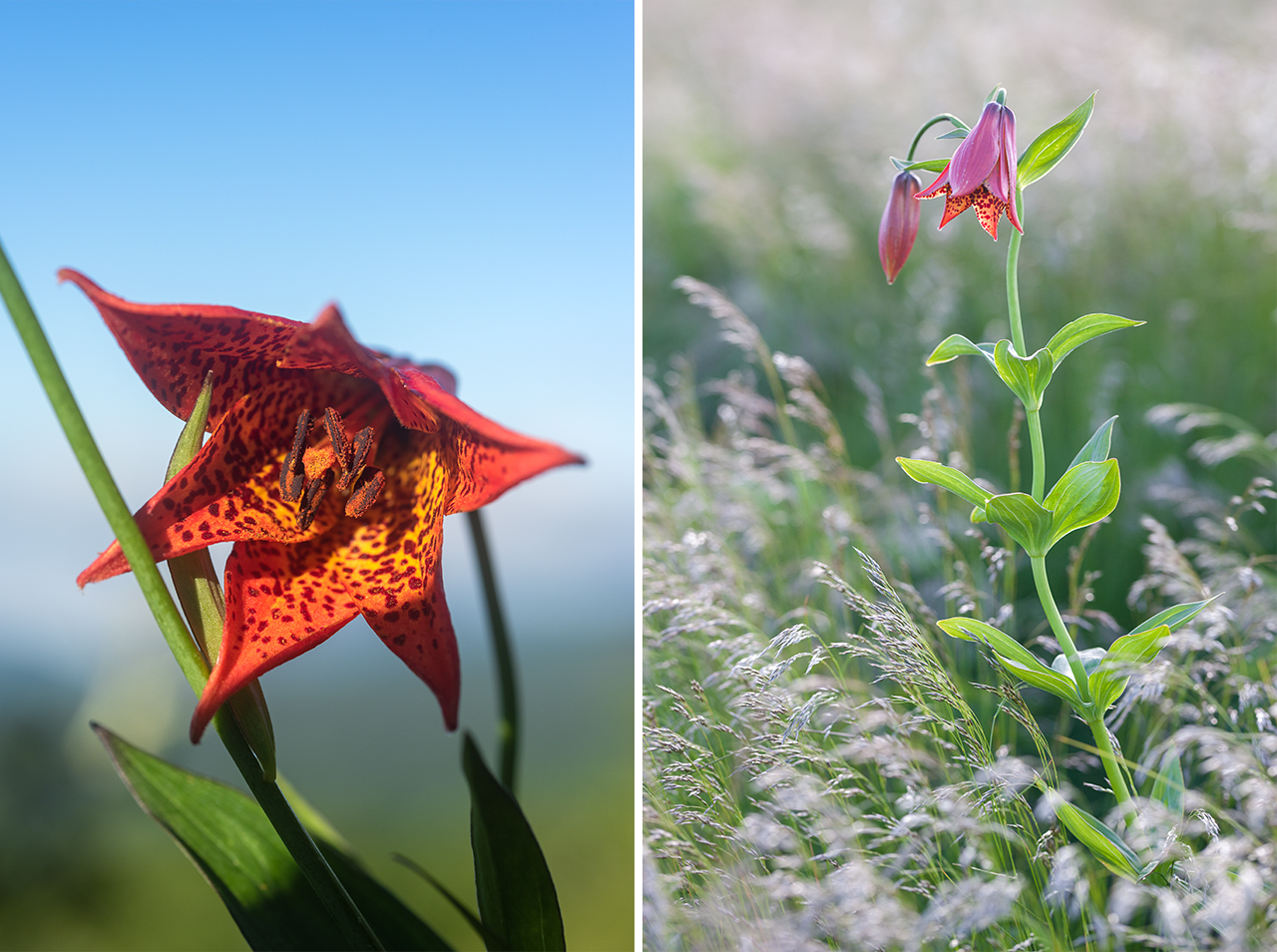
Discovered in 1840 by botanist Asa Gray, Gray’s Lily (Lilium grayi) is a perennial herb growing within the lush, open meadows of the Roan Highlands. The flowers are a beautiful red and orange riding atop slightly recurved petals. Standing between two and four feet in height, Gray’s Lilies are often just small and innumerous enough in relation to their grassy habitat to hide among the grasses despite their bold coloring. Once found, a glance into their nodding heads will delight with patterned black spots and yellow/orange highlights.
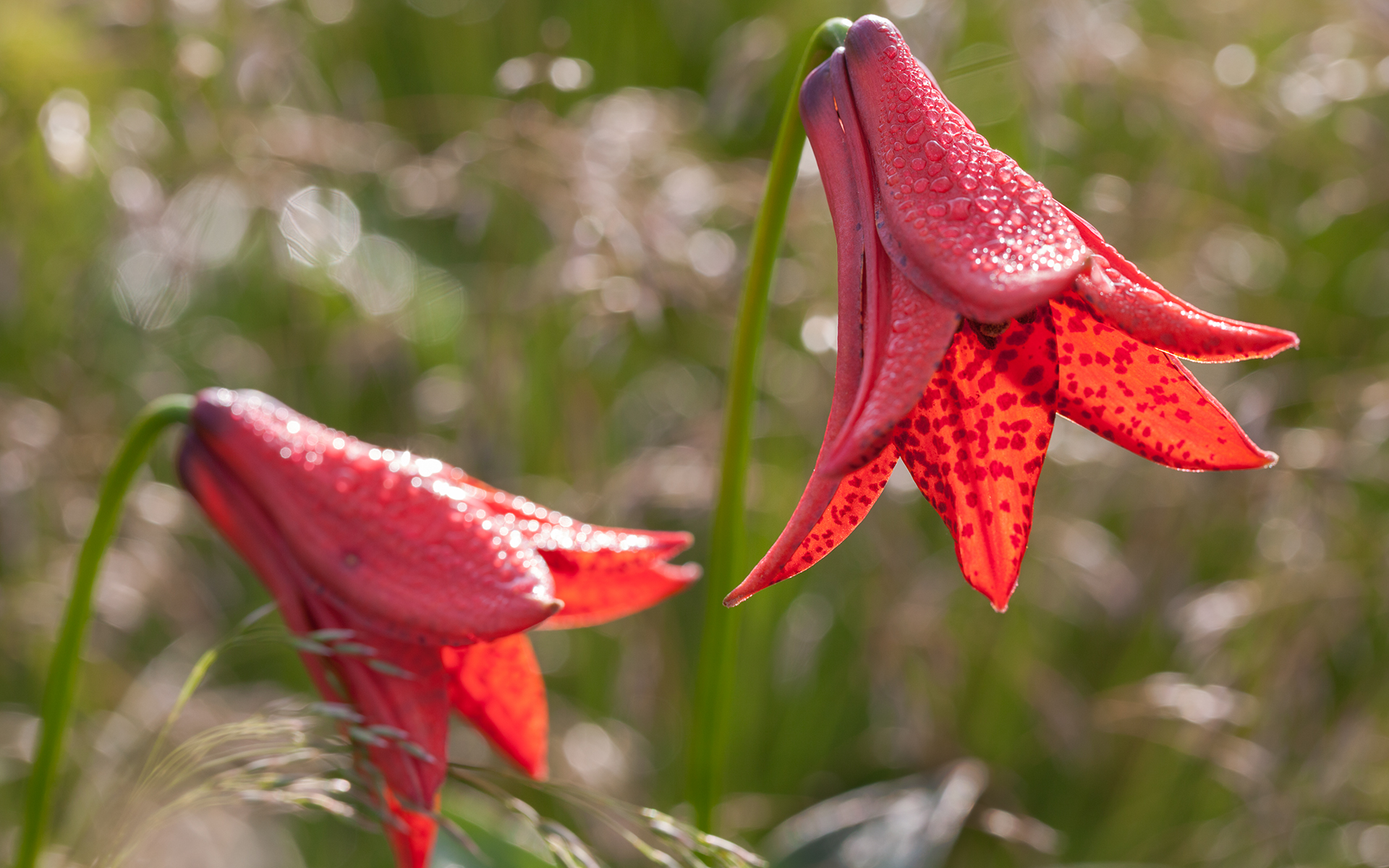

The Roan Highlands are considered the largest remaining population of Gray’s Lilies. All other populations of this beautiful wildflower exist within one hundred miles of this location. NatureServe gives the Gray’s Lily a Global Heritage Rank of G3: Federal Species of Concern. Tennessee lists the Gray’s Lily as endangered. Virginia as S-2: Very rare and imperiled. North Carolina lists the Gray’s Lily as a wildflower of special concern / threatened. The Gray’s Lily is not, however, currently listed as a federally endangered species.
The Gray’s Lily is a difficult wildflower to interact with. While the primary threat to the Gray’s Lily is habitat loss (the grassy balds), this Southern Appalachian wildflower is also susceptible to fungal attack from Lily Leaf Spot Disease. The disease causes premature senescence (accelerated aging) in mature plants, which consequently reduces reproduction. Lily leaf spot disease can be transmitted through contact, human or otherwise. Studies conducted within the past five years have found premature senescence of 60-70% of the mature Gray’s Lily plants in the Roan Highlands. And I read one forecasting model that put the potential loss of all Gray’s Lilies within fifty years. My lifetime.
I feel the urgency of the Gray’s Lily and I wonder if I’m up to the task of visually telling their story.
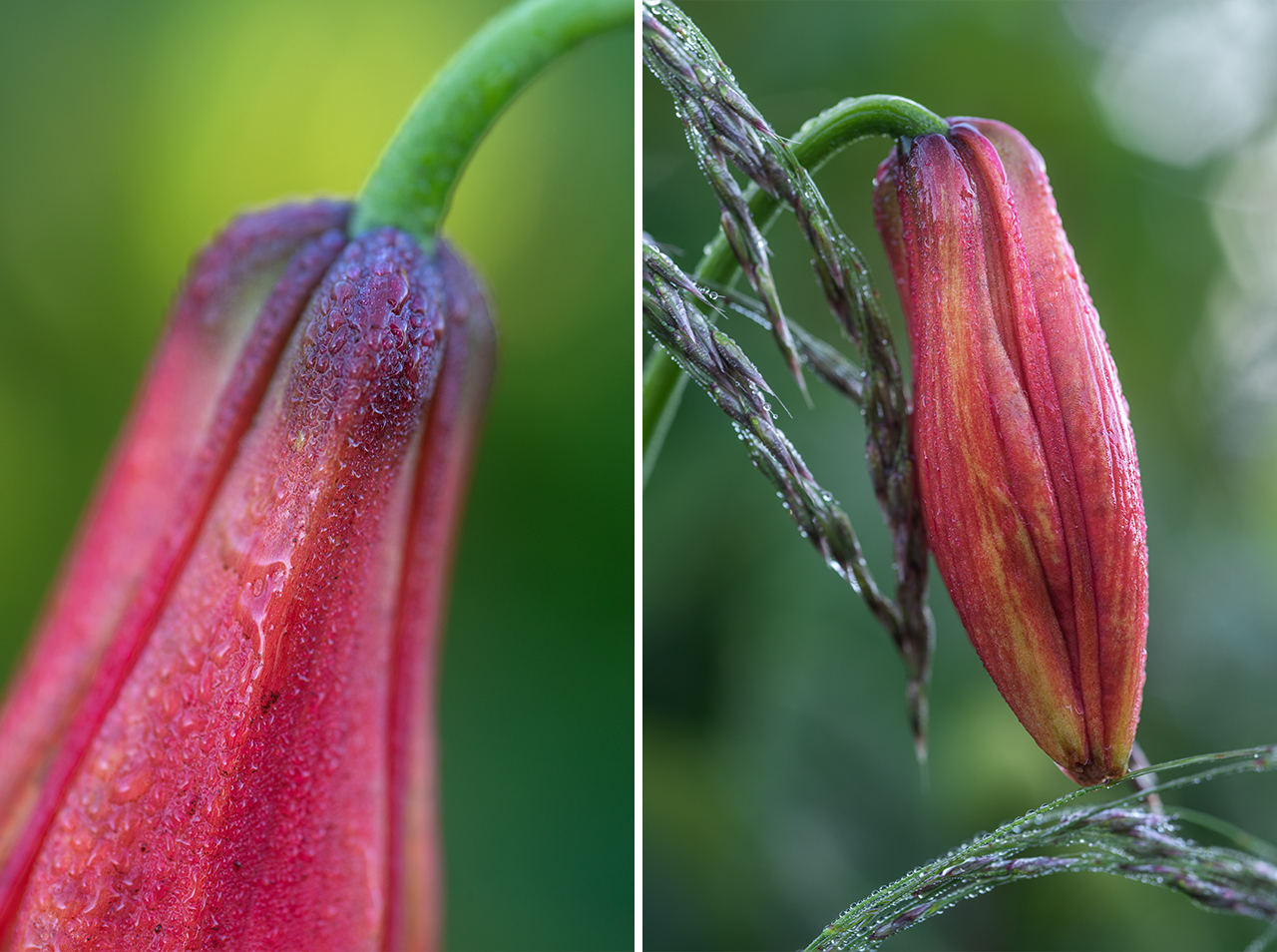
July in the Roan Highlands has a day-after-Christmas feel. June is the big event. Crowds rush to the grassy balds for the numerous colorful blooms of Flame Azalea and Catawba Rhododendron: An absolute explosion of color, growth and activity. The landscape is energized with attention. Not as many, however, stick around in early July for the more diminutive Gray’s Lily. At first, the wildflowers are difficult to even find. Green, radiating, whorled leaves lost amongst large expanses of tall summer grasses. It’s when the lilies grow tall enough and drop greenish/yellow bulbs that I begin to note their presence in greater numbers. The bulbs are several inches and nodding, their shape reminding me of a small pepper.
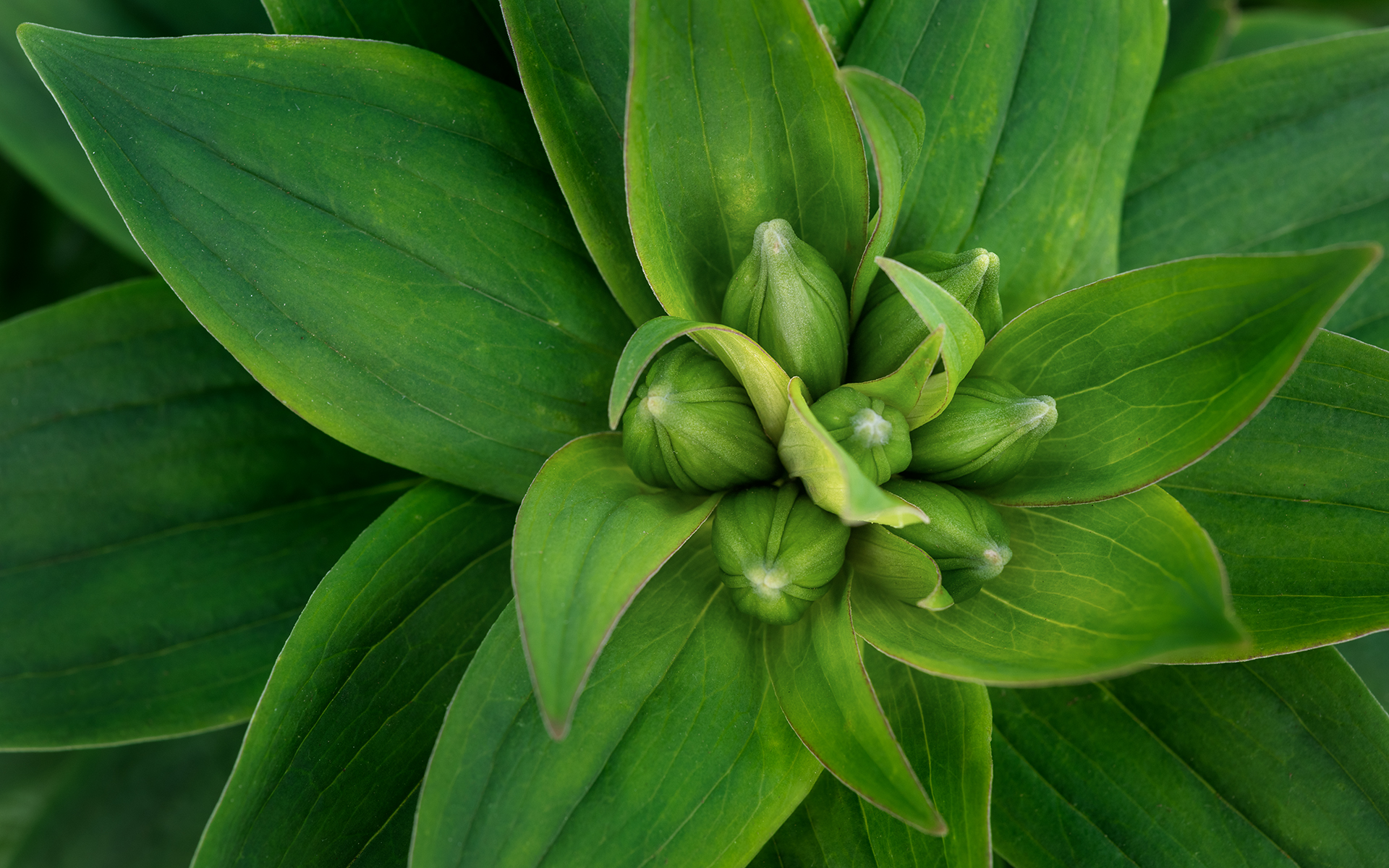
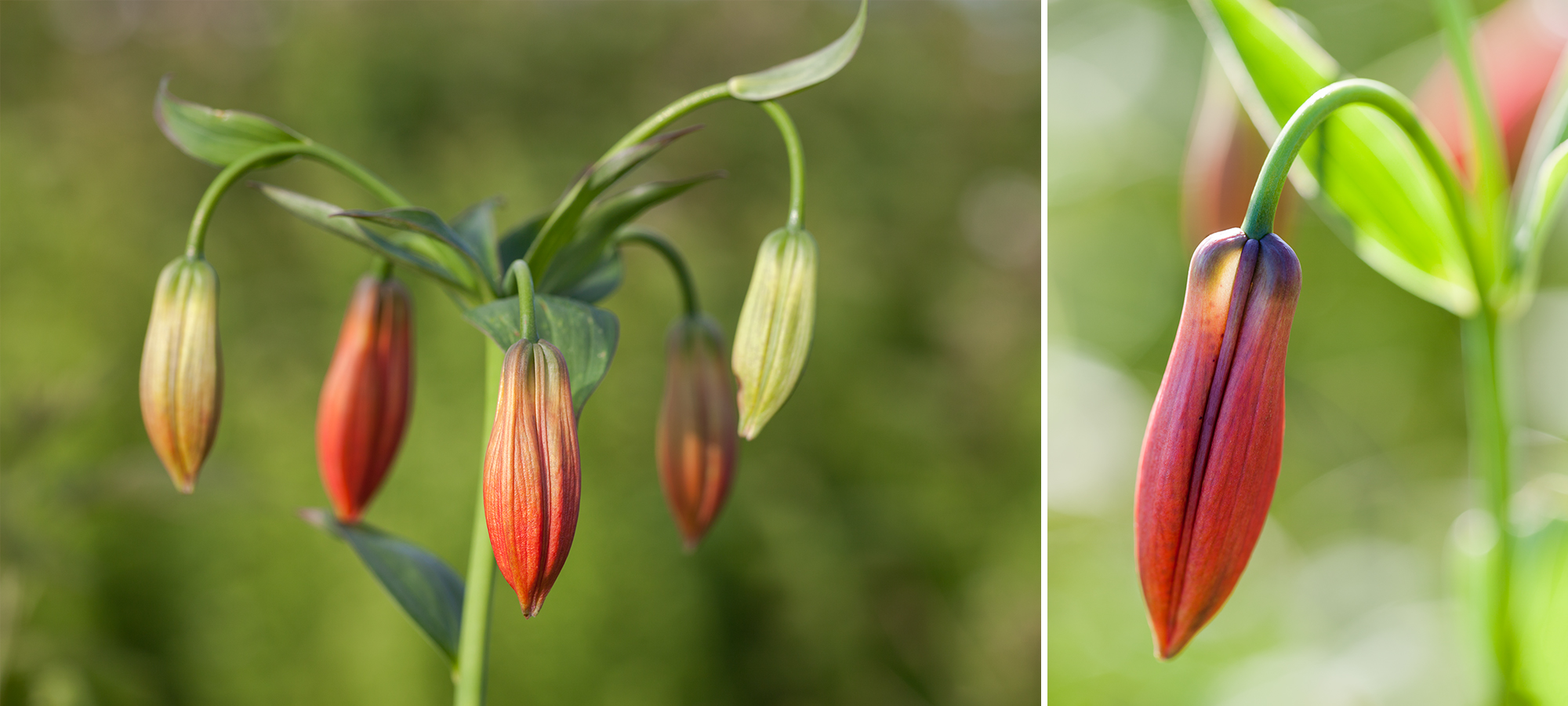
Most of the flowers I see have a single bloom or bulb. Occasionally, I see a single stalk with multiple heads, or bulbs. And, sometimes, I see up to eight or more bulbs radiating from the top of a single green stalk. I count myself exceptionally lucky today. I’m sitting near a group of Grays Lilies that number in the dozens. It’s a truly spectacular grouping of these rare wildflowers. I cannot recall finding such a concentrated showing over the many years that I’ve visited the grassy balds.
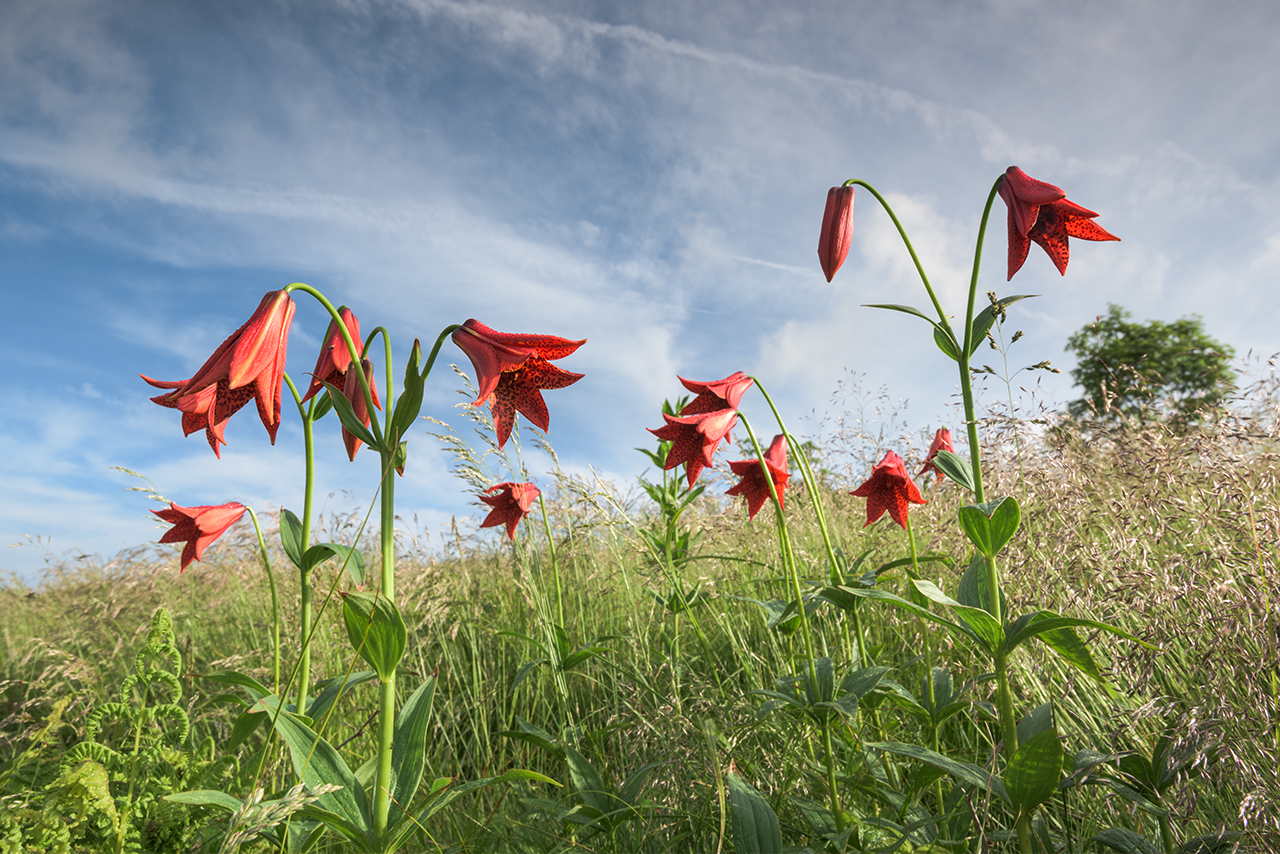
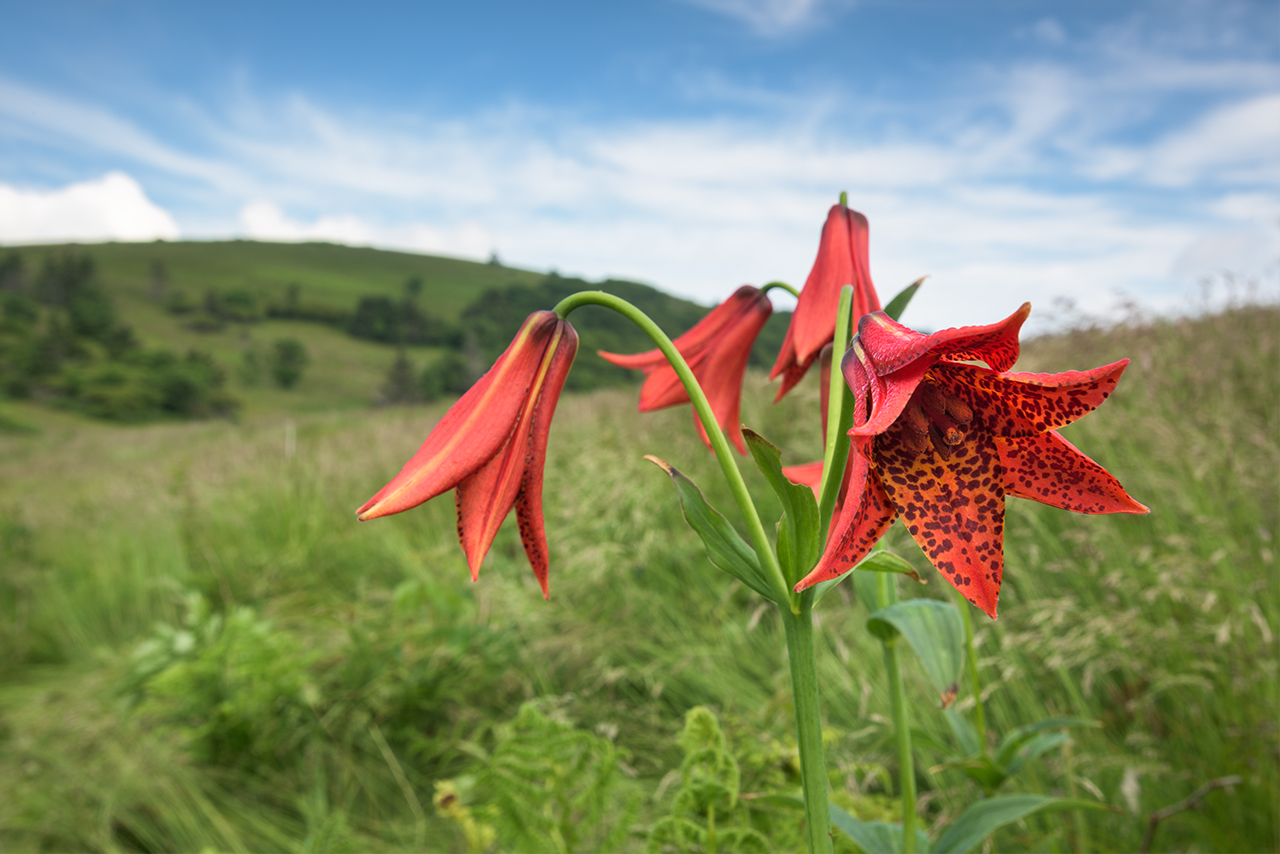
Later, in June of 2016, this beautiful grouping of Gray’s Lilies (shown below) was featured as a two-page spread in Our State Magazine’s “this is north carolina” monthly photo feature. Up to that point, Our State had only ever commissioned typical grand landscape work from me. It was very fulfilling to have a photograph of wildflowers make impact with viewers.
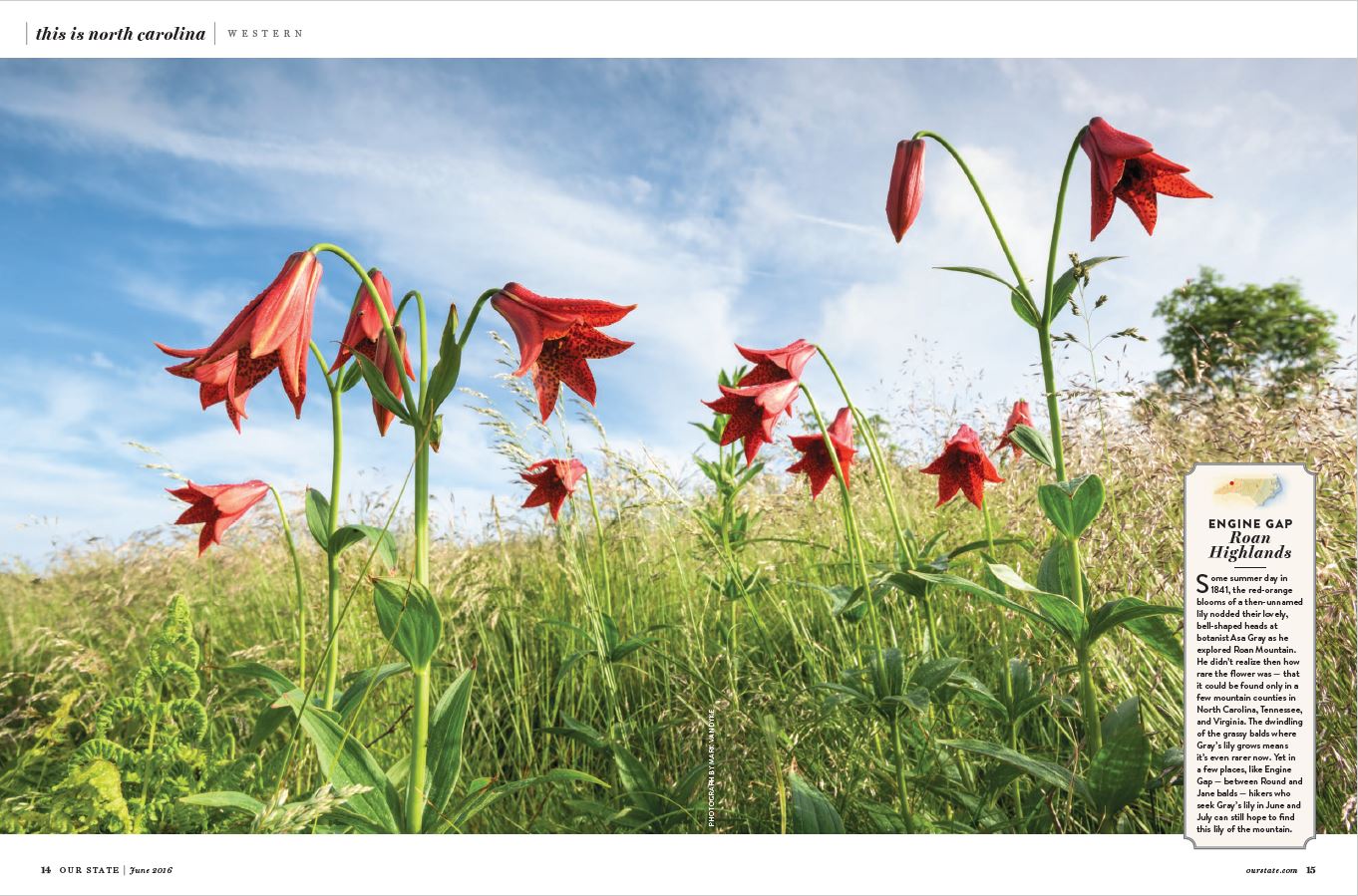
Photographing wildflowers, while similar to grand scenics in many ways, takes a different mindset. Shape, color, line–all are amplified when you are dealing with a smaller subject in a smaller space. Where these overlaps and connections can be muddier (and more easily hidden) in a wide-angle frame, there’s a degree of thought and experimentation that must be worked into wildflower photography. I find myself taking far longer to photograph the Gray’s Lilies than I would the grander Roan Highlands scenics. Counterintuitive. One of my favorite ways to spend an afternoon, though.
I don’t have a defined process. My instinct is to immediately gravitate towards the lens without thought to light or conditions. I want a feeling for how the flower will fit inside of the frame. Portrait or landscape? Viewed from below or above? One flower or many? Part or whole? Once I satisfy those initial questions, I begin to think about what light and/or atmosphere would accentuate my choices. And the last thing I consider is the relationship of the wildflower to it’s surrounding plants: is the connection important? Should I include or exclude? Can I link the two meaningfully in a frame?
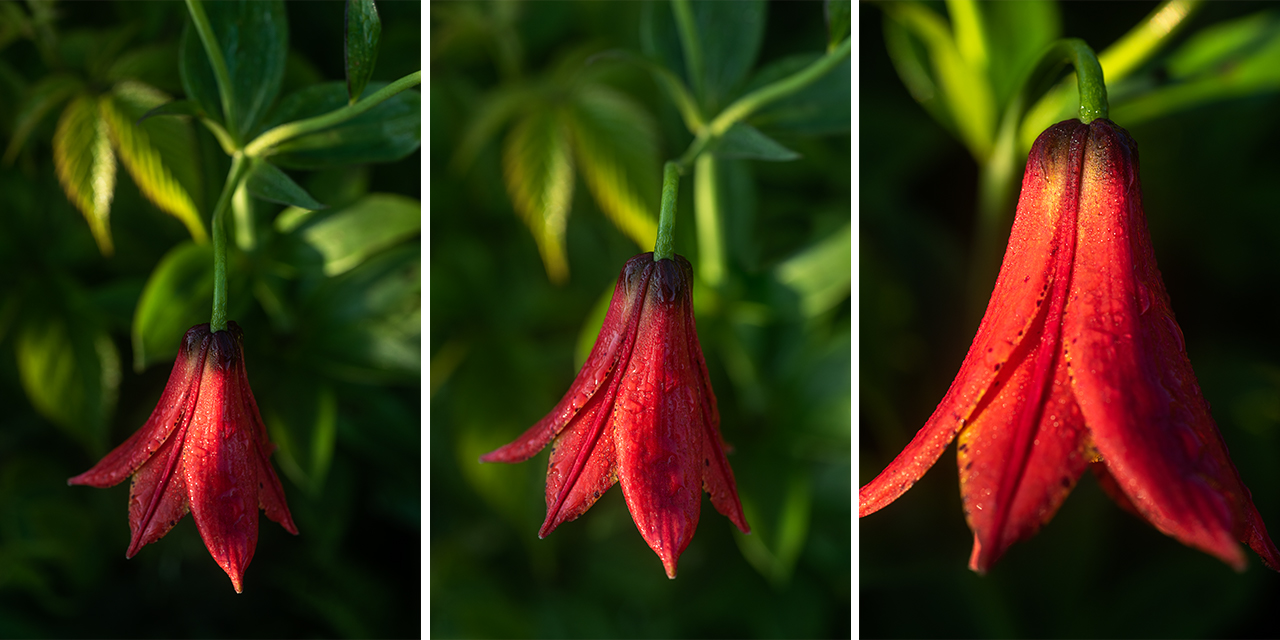
This long summer day is finally drawing to a close. I’m likely to repeat the process tomorrow. Just in case the weather doesn’t cooperate, though, I’ve shot throughout the day. Different lighting and compositions. Guesses, adjustments, corrections. It’s been a slow process of learning about the Gray’s Lily in photographic terms.
Last light arrives and paints the faintest of glow on the outside of the Gray’s Lilies. I’m focused just inside of the bloom, where the chaotic speckles playfully delight. Calm winds allow me to include some of the beautiful grasses where the Gray’s Lilies grow: a connection is made between the habitat and the flower. I don’t use a small aperture. I don’t want everything in focus. My hope is that the frame will remain slightly ethereal to represent the short, magical show these flowers put on. It’s been a wonderful day in a wonderful place. Much was learned. A few frames were executed. Tomorrow is another opportunity. Time and resources willing, I’ll be back to try again.

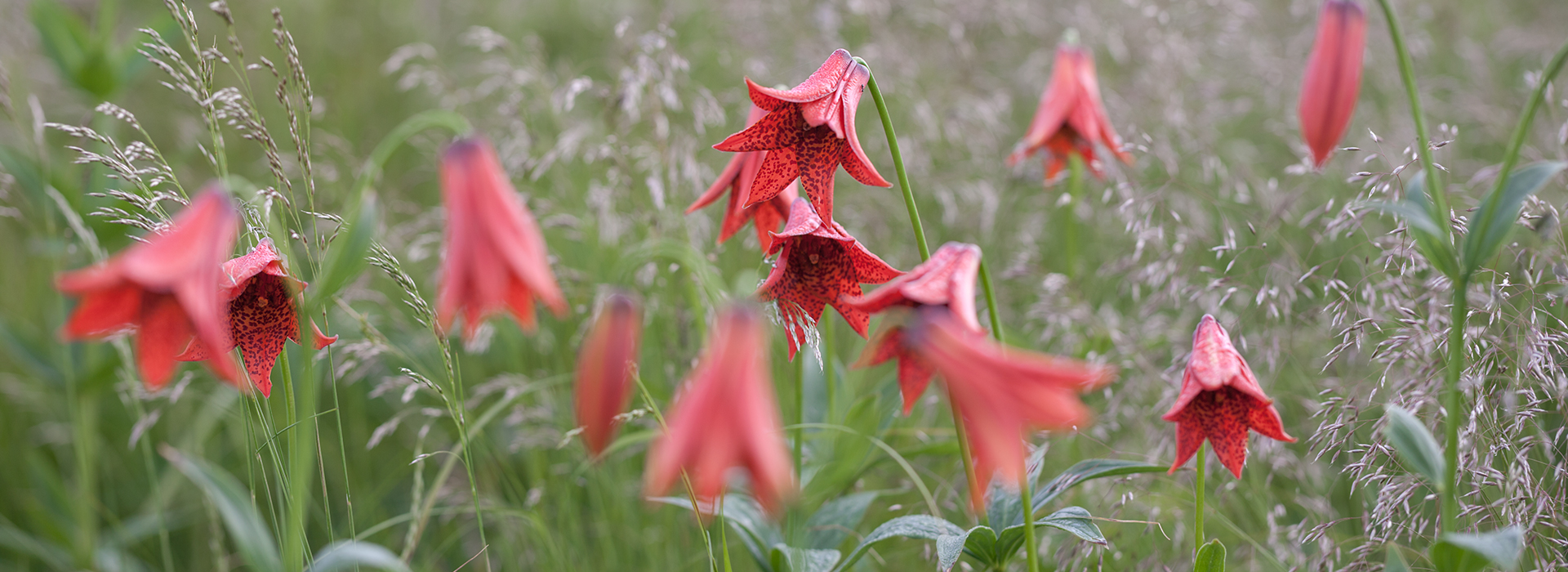
Parting Thoughts
I hear it before I see it. A low humming noise. Audible enough to break me from my thoughts. What is that? Then I see it, just a blur. I guess I’ve been still enough for a Ruby-Throated Hummingbird to perceive me as no threat. He/she visits a few of the blooms, zooming in and out with a speed that ensures I won’t be pulling my camera to attempt a visual! It’s a very quick moment. Yet satisfying. I think, perhaps, these are just the kind of quiet experiences that Oliver and Welling hint towards in the pursuit of a deeper and more meaningful connection with the natural world.
Of the many questions I ask of myself, the most difficult is often, “Should I share this photograph/location/experience?” Many want to gatekeep fragile landscapes and wildflowers. If, however, only a handful of outdoors people experience something, I won’t be surprised when outside interests with little care for a place decide they have a higher use for the land. My preference has been to treat others as I would hope others would treat me: with respect as an adult and a hope towards the passing of stewardship and care for the land/place.
On the other hand, the Gray’s Lily is rare and it grows in an even rarer habitat, one that is shrinking. Between fungal attack, deer browsing, and a disappearing habitat, do the Gray’s Lilies need more attention? Is it possible that a flower does delight in my/our attention? Or, do the Gray’s Lilies deserve time without me and my camera; without my blog posts and my social media entries? Should I delete this post?



I’m glad that you have not deleted this post. I heard of this flower in an interview on the native plant podcast. When I looked it up I found this blog post. I live in North Carolina and may make a trek to the highlands to see this flower in the summer. This article was educational, and the photos are gorgeous. Thank you!
Thank you, Tilly! I appreciate the good words! The Gray’s Lily is a gorgeous wildflower; a trip up to the Roan Highlands to catch them in bloom is well worth the effort. I hope you find them in abundance and good shape.
Thank you for sharing these images and experiences with us. It’s fascinating to learn more about the history of Gray’s Lilies and your history with them. You definitely shouldn’t delete this post – the respectful attention you have given raises awareness and inspires care. We are more willing to protect and preserve what we know about and understand. I hope you get more opportunities with them this summer.